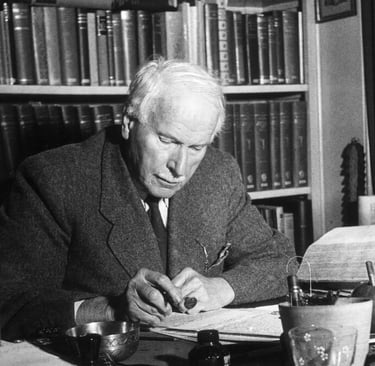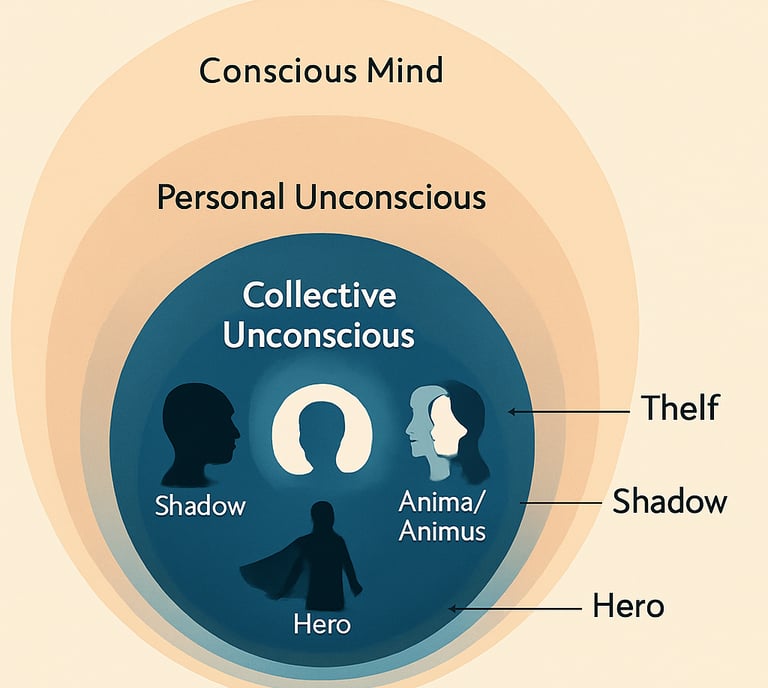The Archetypes and Individualisation
Carl Jung's basic classifications of psycolocial types and their brief description.
AUTHORSJUNG
8/9/20252 min read


Archetypes: Universal Symbols
Jung introduces the concept of archetypes, as universal symbols. The archetypes are inherited symbols and patterns that exist in the psyche of every individual. These archetypes sit in the collective unconscious of the psyche. They are a result of past human experiences and are evident in our culture, arts and literature. These archetypes shape how we behave, and what we dream and form cultural myths.
Examples include the Hero, the Mother, the Shadow, and the Anima/Animus.
The Mother: The nurturing, protective, and life-giving aspect of femininity.
The Mother archetype appears in our relationships, creativity, and caregiving roles.
The Hero: The Hero archetype embodies courage, resilience, and the quest for self-discovery. Think of mythic heroes like Odysseus or Harry Potter.
We encounter the Hero within ourselves when we face life’s challenges head-on.
Shadow: The shadow represents the hidden, repressed aspects of ourselves.
It contains both negative traits (our “dark side”) and positive potential.
Integrating the shadow involves acknowledging and accepting these hidden aspects.
Anima and Animus:The anima (in men) and animus (in women) represent the opposite gender within us.
They serve as bridges to the collective unconscious and influence our relationships.
Developing a healthy anima/animus leads to greater self-understanding.
The Journey of Individuation
The concept of Individuation is the central concept of Jung’s work. Individuation according to Jung is the process of integrating all three aspects of the Psyche. The process of individuation according to Jung starts with awareness of the consciousness, personal unconsciousness and collective unconsciousness.
The second step in the process is the integration of the three elements of the Psyche. Jung believed that harmony between these elements is the foundation of a fulfilled life.
Jung believed that these three elements work together to form the SELF. The Self consists of conscious and repressed elements in unconsciousness. The repression of thoughts and feelings was the cause of human misery.
Through his work in Psychiatry, Jung concluded that every element, every thought and every feeling in our brain is a part of us. Suppressing the inner self to portray a persona leads to misery and suffering. Embracing every thought, good or bad leads to the discovery of the true self. This according to him was the sole purpose of human existence.
Whether it is through psychotherapy, introspection, personal development through authenticity or any other combination, Jung believed that it was the task of every individual to strive toward the process of individuation.
The process of individuation starts with self-realization, which requires a radical approach to self-acceptance, and radical self-acceptance requires blunt self-honesty. Every thought and emotion is a part of the Psyche, accepting and embracing every part of the Psyche leads to Individuation.
Embracing the Journey
In summary, Jung’s model invites us to explore our inner depths, confront life’s absurdities, and embrace our shadows. By doing so, we move toward greater self-awareness and fulfillment. So, let us embark on this timeless journey—a quest for authenticity and wholeness.


